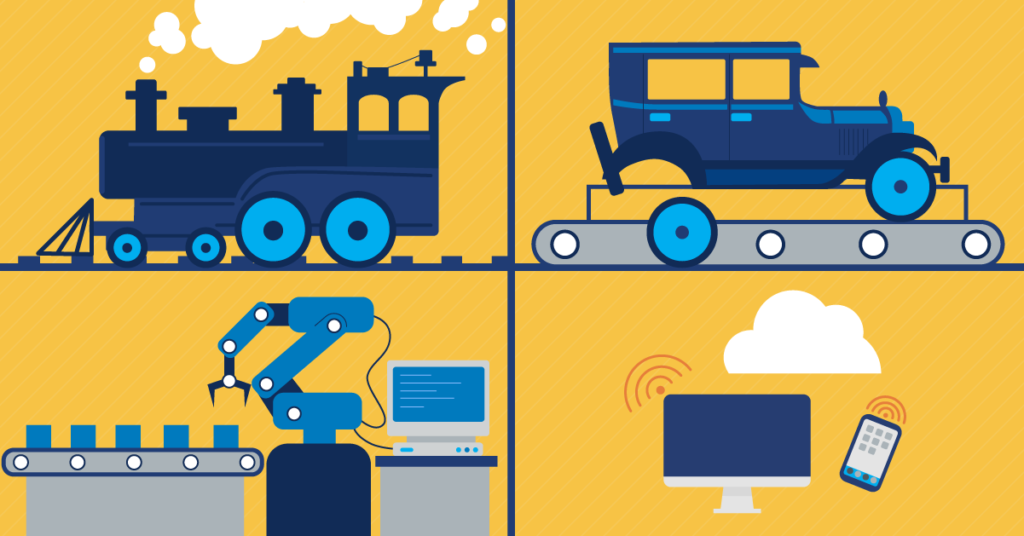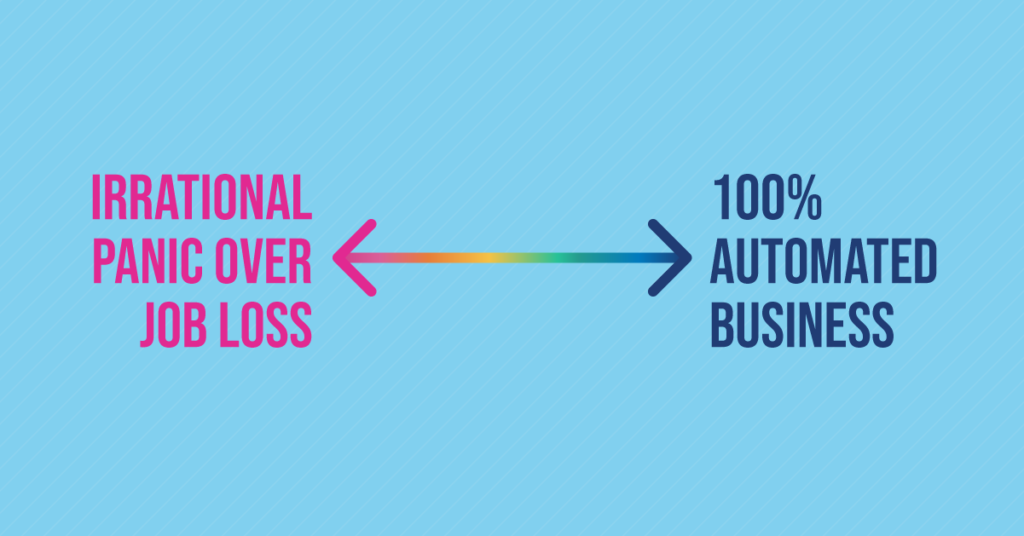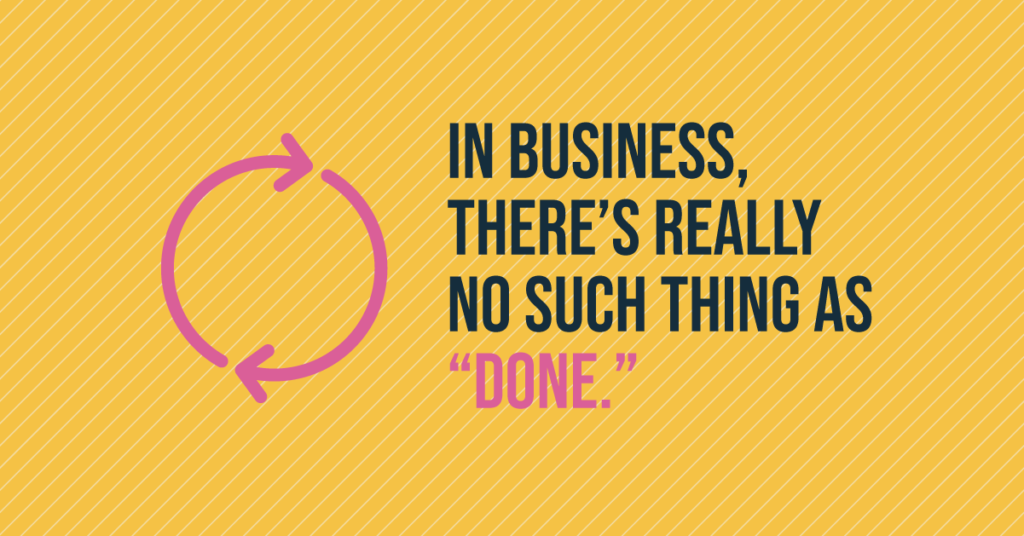Lessons for Accounts Payable from the History of Automation

When it comes to automation, most people are in one of two camps.
First Camp
Some people fear that automation will replace jobs, reduce quality, and disrupt their way of life.
Second Camp
The other cohort takes a strategic approach by seeing automation as a tool to replace tasks, not jobs, and is rewarded with increased output from streamlining business processes.
In order for business leaders to be effective in the modern, technological landscape, they need to find themselves in the second camp of being strategic, but that doesn’t mean they need to ignore the fear in the first camp.
Instead, address those fears head on with facts and lessons from history. In this post, we’ll take a look at what we’ve learned from the historical implementation of automation at a high level, the reality of what it means for the workforce, and apply those lessons to accounts payable in 2020.
If History Repeats, Workforces Will Adapt to Automation
Resistance to automation is nothing new.
In the 1800’s, the Luddites claimed that mills would make workers obsolete.
On April 27, 1907, New York lamplighters went on strike, some even going as far to break electric lamp posts.
There will always be some resistance to automation because growth—either for the company, the industry, or society as a whole—is often not reflected in the bank accounts of the individuals who have been put out of work. Generally speaking, however, growth is unstoppable. Once we find a better, more efficient way to complete the work we need done, we’re going to use that method.
But this displacement of tasks typically isn’t as dire as anticipated. Workers will adapt.
At the close of WWII, many women who had stepped into the workforce for the first time to support the U.S. wartime economy stayed there. This added six million people to the workforce, an 11% increase. The soldiers who returned used their G.I. bills to learn new skills and find higher-value jobs, many outside of the agriculture industry. All told, industries outside the agriculture field saw productivity jump by 33% due to increased automation and higher-skilled workers.
If we can’t stop growth driven by automation (we can’t) we must adapt, and we will.
The Reality of Automation
The spectrum of looming automation looks something like this:

On one side, you have panic from workers who fear they’ll be replaced by robots and lose their jobs. This fear is irrational, but you can understand their concern.
On the other, you have the companies selling the automation technology telling you how wonderful and hands-off your business will be, and how much money you’ll save. While partially correct, this is more of a sales pitch than practical application.
The reality, as usual, is somewhere in the middle. There are a few reasons for this.
Most Automation is Partial
It’s rare for an entire job role to be 100% automated, especially with knowledge work. Sure, software can automatically grab data and run formulas, but most of the time, it can’t form insights and deliver them to managers and clients.
Think of all the technology advances between 1950 and now. Since then, only a single occupation of the 270 listings in the U.S. Census were eliminated: elevator operators.
Automation Increases Ability to Scale
When it comes to scaling a business, it’s all about finding and addressing your bottlenecks. If you have one or more bottlenecks in your business, that means that somewhere, there is an employee sitting around waiting on a coworker to finish his part so she can get started. All of these bottlenecks represent lost revenue.
Automated workflows are designed to work quickly and efficiently—with software, many automated processes only take seconds to complete, offering you the ability to work through backlogs and remove bottlenecks.
Technology Creates More Jobs than it Eliminates
Sure, electricity eliminated the need for lamppost lighters, but it also created electricians.
In business, there’s really no such thing as ‘done.’

Every process improvement creates an opportunity to get better somewhere else along the chain of tasks. When employees have less manual labor or repetitive tasks to complete, it allows them to pursue more human endeavors, such as problem solving, collaboration, and creativity.
OK, so in general, the net effect of technology means more jobs, not fewer. But what about when applied specifically to accounts payable?
Let’s zoom in and examine how AP automation will affect our industry.
Accounts Payable Automation Reality Check
Well, here we are. Will Accounts Payable automation (AP automation) cause people to lose their jobs? Will the benefits in the sales brochure actually materialize for your company? Let’s look at the facts vs. fears.
AP Automation will Create Job Loss
This is a fear without much basis in reality. While it’s true that experts have predicted 40% of today’s jobs are expected to be replaced with automation in the future, we don’t believe this will lead to massive layoffs in the accounts payable industry. After all, marketing automation software (HubSpot, Pardot, MailChimp, etc.) didn’t eliminate your marketing department, and neither will an AP automation platform.
Instead, look for AP departments to take on a more strategic role within the company as technology and automation free AP teams from administration tasks like data entry. With the time savings, AP teams will now have the opportunity to review invoice coding, documents, historical invoices, and assigned approvers before sending off for approval.
In the future, AP may compete with top tech companies to recruit talent with skills like programming and data analytics.
AP Automation Creates Security Risks Due to Electronic Payments
When payments are issued electronically and data is stored in the cloud, some people will always have fear, but it is unfounded. This is because online payments use SSL protocols for data encryption, follow PCI DDS guidelines for managing payment data, and provide tokens so that your data doesn’t even touch a server.
According to the 2019 AFP Payments Fraud and Control Survey Report, 70% of organizations experienced check fraud in 2018. While checks can be handy with the proper internal controls in place, checks unfortunately are some of the most-targeted payment methods for bad actors because credit and debit card chip/PIN validations are harder to crack.
AP Automation will Overload your IT Department
We can’t speak for every AP automation platform, but with Stampli, you’re looking at a much less need for IT support. Organizations can implement Stampli without the need for IT (but welcome to listen in on demos and setup calls), and since the software is hosted in the cloud, there’s no need to clog your IT ticketing system with requests for updates.
In fact, your IT is likely to thank you because they won’t have to spin their wheels finding ways to patch your legacy systems.
AP Automation is Hard to Implement
Not with Stampli as we can have your organization up and running with our AP automation platform in days.
Here are three simple steps to getting buy-in for AP automation at your organization.
History has a tendency to repeat itself, but we can use that to our advantage.
We can comfort our AP teams about the security of their jobs while also encouraging them to adapt. We can look forward to the inevitable rise of artificial intelligence and embrace it in order to enhance both people and processes.
AP automation isn’t something that should be on your horizon—it should be in your toolbox right now.
Talk with one of our AP Heroes at Stampli about your unique situation.